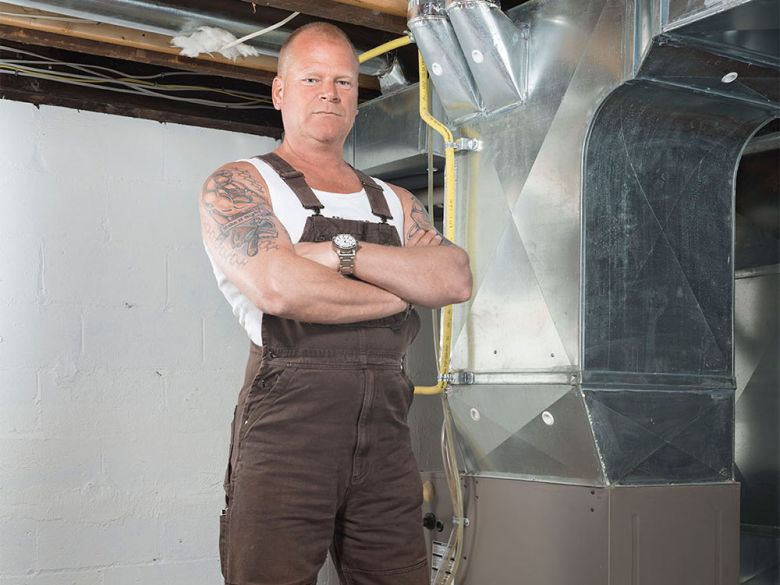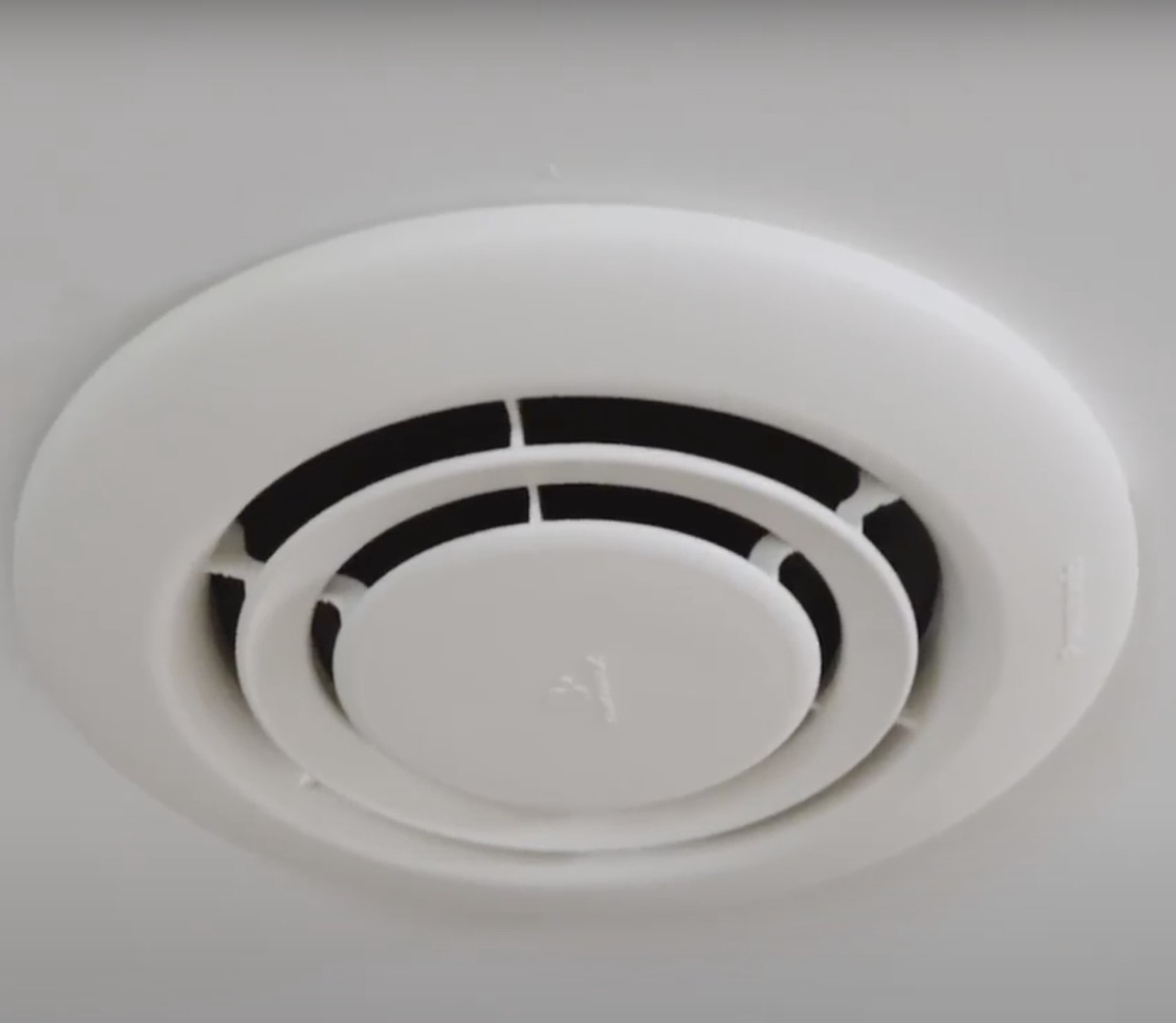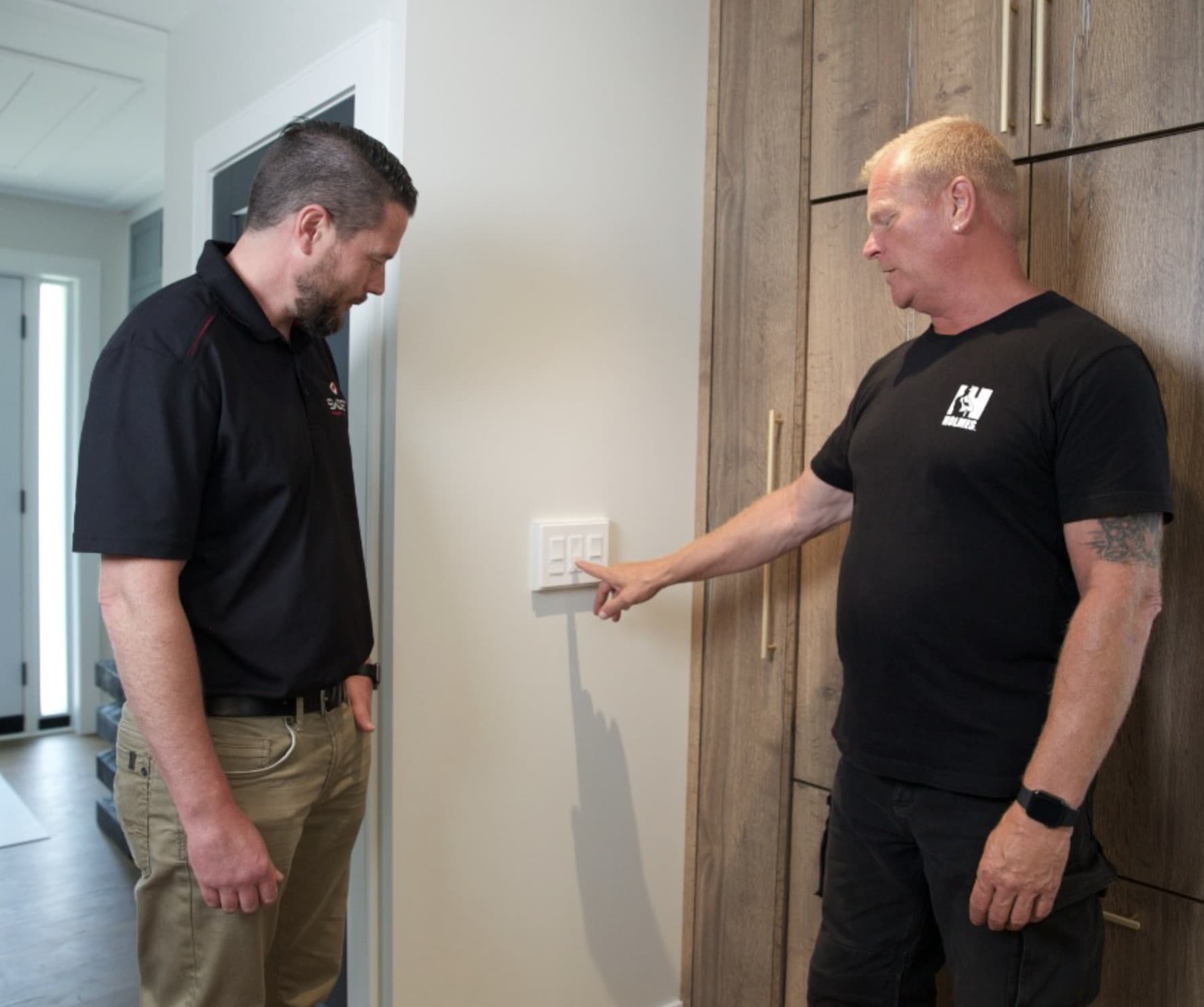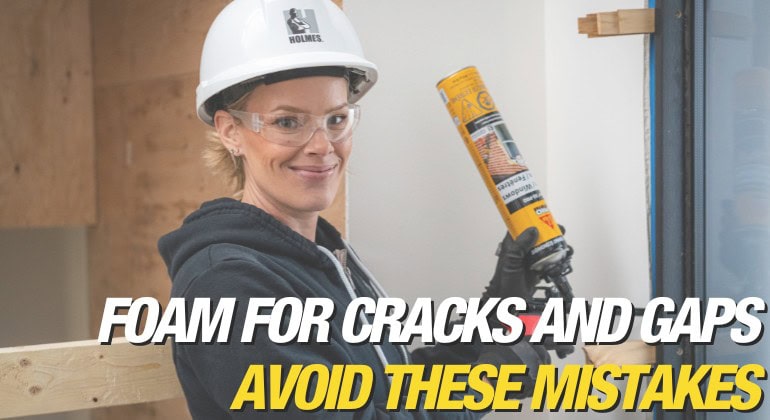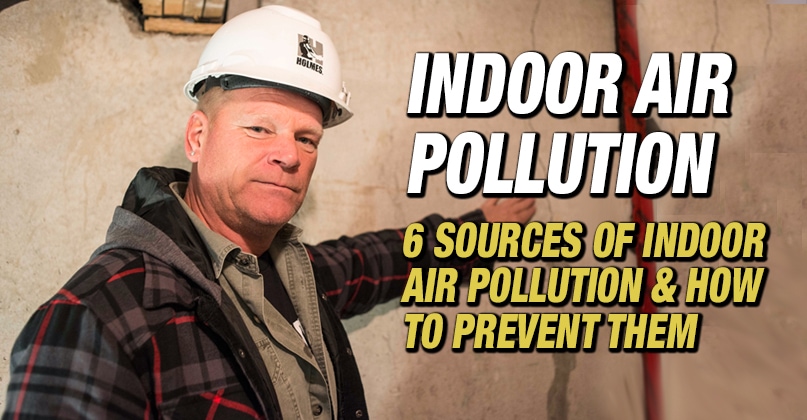When it’s time to replace your HVAC system, you have several options, each with its own benefits. Choosing the right HVAC system depends on your home’s size, climate, energy needs,...
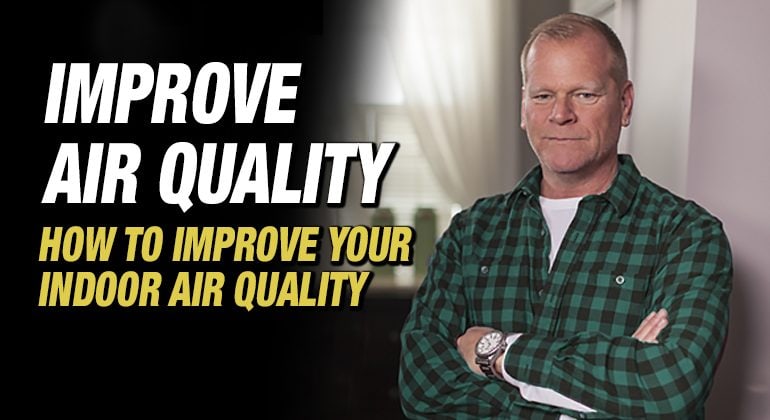
How to Improve Your Indoor Air Quality
By Mike Holmes
Mike’s Advice / Home Safety & Maintenance
Tuesday, March 24th, 2020 @ 3:16pm
How To Improve Your Indoor Air Quality (Tips)
We all spend more time indoors than you may think. It’s been estimated that we spend about 90% of our time in an indoor space. Whether this is because we’re too busy to get outside, or because we’re not as outdoorsy as we believe ourselves to be – the fact is, we’re spending a lot of our time indoors. For most of us, we’ll spend the majority of our time in two places: at home, and at work. So have you thought how how to improve your indoor air quality?
The quality of the air inside our homes plays an important role in how we feel day by day. Do you get frequent headaches? Are you worried about indoor allergens?
DID YOU KNOW
The air inside of your home can actually be up to five times more polluted than the air outdoors?
Let’s break down exactly what it means to have poor indoor air quality, how we can determine the source of our unhealthy air, and what steps can we take to address it.
Introduction to Indoor Air Quality
Health effects from your indoor air pollutants may show up soon after exposure or, possibly, years later. These symptoms can include respiratory diseases, heart disease, and even cancer. It is important to try to improve the indoor air quality in your home even if symptoms are not noticeable.
Here are some tips to improve your air quality:
To deal with poor indoor air quality, you need to look into source control, improved ventilation and air cleaners.
- #1 Get an indoor air quality test
- #2 choose materials that off gas a small amount (or no) VOCs
- #3 regularly change the filters in your HVAC system.
- #4 Have your ducts professionally cleaned
- #5 Open your windows for about 15 minutes every day
- #6 Invest in an ERV or an HRV
- #7 Invest in an air purification system
- #8 Use your kitchen and bathroom fans
Sources Of Indoor Air Pollution
There could be many sources of indoor air pollution in your home. Good air quality starts with source control. Some of them are:
- Building materials and furnishings such as:
- Deteriorated asbestos-containing insulation
- Newly installed materials such as flooring, upholstery, or carpet
- Cabinetry or furniture made of certain pressed wood products
- Household cleaning and maintenance products
- Central heating and cooling systems and humidification devices
- Fuel-burning combustion appliances
- Tobacco products
- High levels of humidity/moisture
- Outdoor pollutants coming into the house such as:
- Radon
- Pesticides
- Outdoor air pollution.
For asbestos and mold removal, we work with Canadian Restoration Services.
RELATED: What Are The Dangers Of Radon?

Open up your windows for 15 minutes every day.
How Healthy is My Home?
Panasonic conducted an extensive study on indoor air quality. It shows that 62% of homeowners believe that a healthy indoor air environment is important. However, only 12% of homeowners think their air quality is poor. Read the full report here.
How Do You Know If You Have Poor Indoor Air Quality?
Poor indoor air quality may cause the following symptoms:
- headaches,
- tiredness,
- coughing, sneezing,
- sinus congestion,
- shortness of breath,
- dizziness and nausea.
- It can irritate the skin, eyes, nose or throat.
- Allergy or asthma symptoms could get worse.
To deal with poor indoor air quality, you need to look into source control, improved ventilation and air cleaners.
Do I Need an Indoor Air Quality Test?
There are a few times I would always have an indoor air quality test done – even if I wasn’t feeling sick in the home: if it was a home I was about to buy, and if it was a home I was about to sell.
Book an indoor air quality test through my team at Mike Holmes Inspections.
If you feel any of the symptoms listed above frequently without any explanation, an indoor air quality test may be able to shed some light on why you’re not feeling too good in your own home.
When it comes to radon – this is a gas you can’t see, smell, or taste – so the only way to know if your home has elevated levels that could cause harm are by testing for it. To get a more accurate reading, you’ll want to use a long-term test that collects data for 90 days or more.
Learn about your testing options from Radon Environmental Management Corporation.
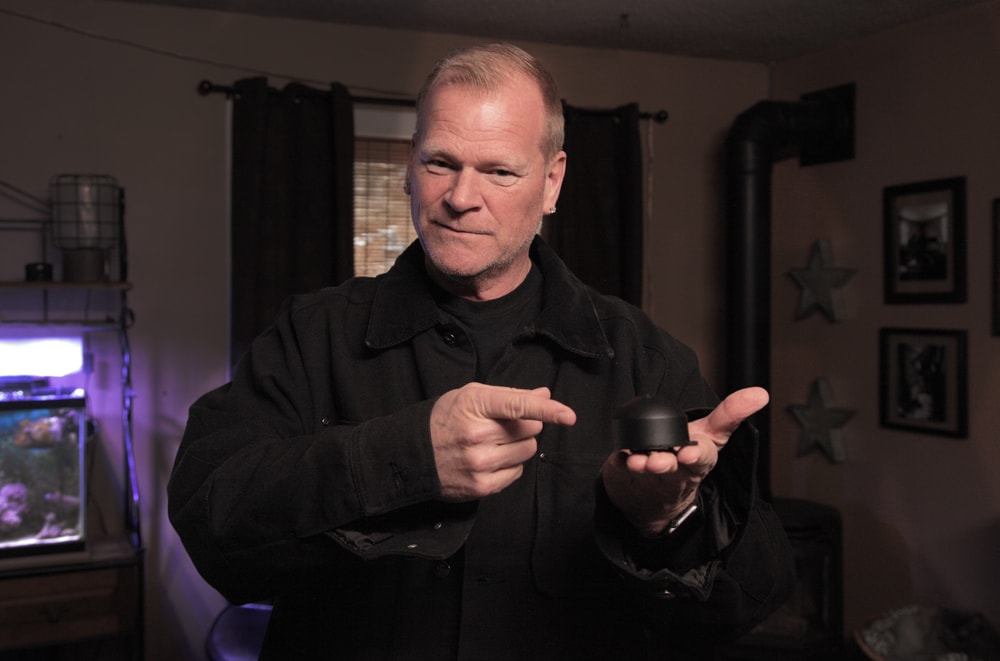
When it comes to radon, Health Canada suggests testing every few years to ensure that your radon levels remain low.
RELATED
Explore Radon Testing Options
What Does Unhealthy Air Quality Mean?
Most of the time, when the outdoor air has toxins, it can dilute into the atmosphere. But when those unhealthy toxins – I’m talking about things like volatile organic compounds (VOCs), mold, lead, even cancer-causing gasses like radon get into our homes, they can build up and cause us harm, make us sick, or in extreme cases, cause death.
EASY Steps to Improve Your Indoor Air Quality
One small tip that I encourage every homeowner to follow, is to regularly change the filters in your HVAC system. Why does this matter? Well, the filter doesn’t actually do anything to filter the air in your home – that’s a misconception. But it does ensure that your unit is working at peak efficiency at all times.
RELATED
Learn about the systems in Your Furnace Room
Invest in an Air Purification System
We have been installing the WhisperAir Repair™ Air Purification system from Panasonic, and it is a FANTASTIC system. It’s a compact ceiling-mount air purifier that keeps indoor air clean and fresh around the clock. It purifies contaminated air in your home by inhibiting the growth of bacteria, viruses, allergens and mold.
This spot purification device uses Panasonic’s patented nanoe™ X technology. It also breaks down hazardous substances, for a healthier home environment.
Change Your Furnace Filters
You want to get in the habit of changing the filters at least every three months. To me, that’s not enough, I change mine monthly. During the summer and winter, when our heating system and air conditioning system is running on overdrive, you’ll want to change them every month. In spring and fall, you can probably get away with every three months.
Duct Cleaning
I get asked a lot about having your ducts professionally cleaned. I say it’s a good thing. Now, you probably won’t need to do it yearly (unless you’re a pet owner), but this is to help ensure a healthier air quality throughout the home.
TIP
For major renovations, build the cost of duct cleaning into your budget.
Invest in an HRV (Heat Recovery Ventilator)
Promoting fresh air to cycle through the home is a good thing. It’s why it’s code in Ontario for new builds to include heat recovery ventilators (HRVs) which will automatically do that for you. If your home doesn’t have one – even something as small as opening the window for about 15 minutes can promote a healthy air exchange. You should even do this during the wintertime.
Invest in an ERV (Energy Recovery Ventilator)
ERVs are a type of HRV that can exchange both heat and moisture. Energy Recovery Ventilators (ERVs) manage the moisture in the air being pulled into your home. In the winter, your ERV transfers humidity from the air extracted from your house, keeping your humidity levels relatively stable.
Panasonic’s Intelli-Balance™ and WhisperComfort ERV are fantastic solutions for builders and homeowners. WhisperComfort Energy Recovery Ventilator (ERV) is a stand-alone system that provides balanced ventilation.
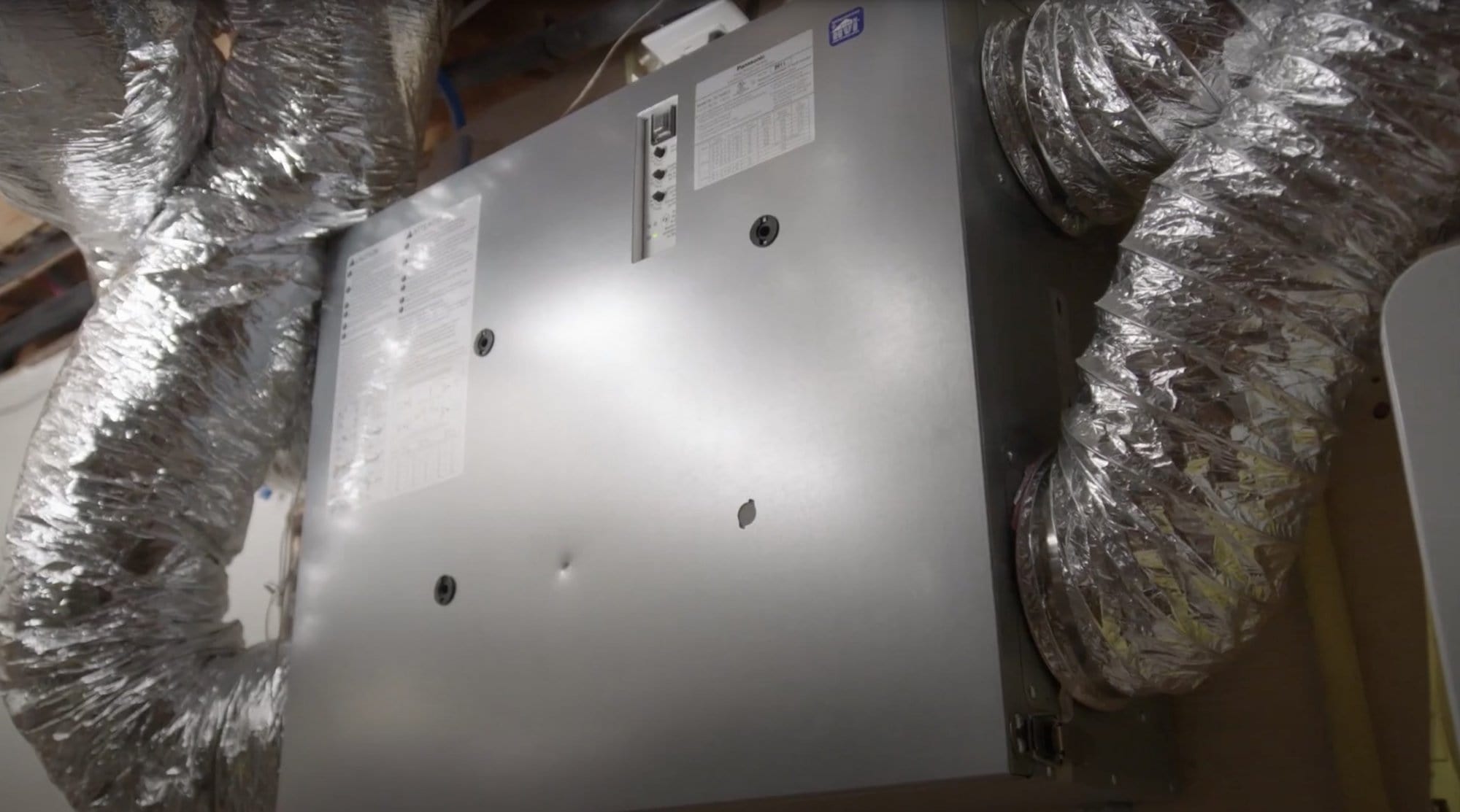
Panasonic ERV installed on Holmes Family Rescue
RELATED: Here is more information on HRVs and ERVs
Clear Dust Mites
Your bed sheets, curtains, and cushions are big magnets for dust mites. Clean these items regularly. These mites produce allergens.
Get An Indoor Air Quality Test
I recommend hiring a professional who can test your home’s air quality for contaminants. I don’t trust the accuracy of the DIY air quality tests.
Use Your Bathroom and Kitchen Ventilation
You need to understand the importance of exhaust fans and proper ventilation and how to properly install and operate them. This is very crucial for removing excess moisture from your indoor air. Excess moisture can lead to mold growth. Effective ventilation ensures that you have good indoor air quality. Improving your ventilation systems has many benefits:
- reduces the number of indoor air pollutants
- helps to limit the buildup of indoor moisture, which can contribute to mould growth
- removes stale indoor air and increases the amount of outdoor air that comes indoors
Here is more information on bathroom and kitchen ventilation.
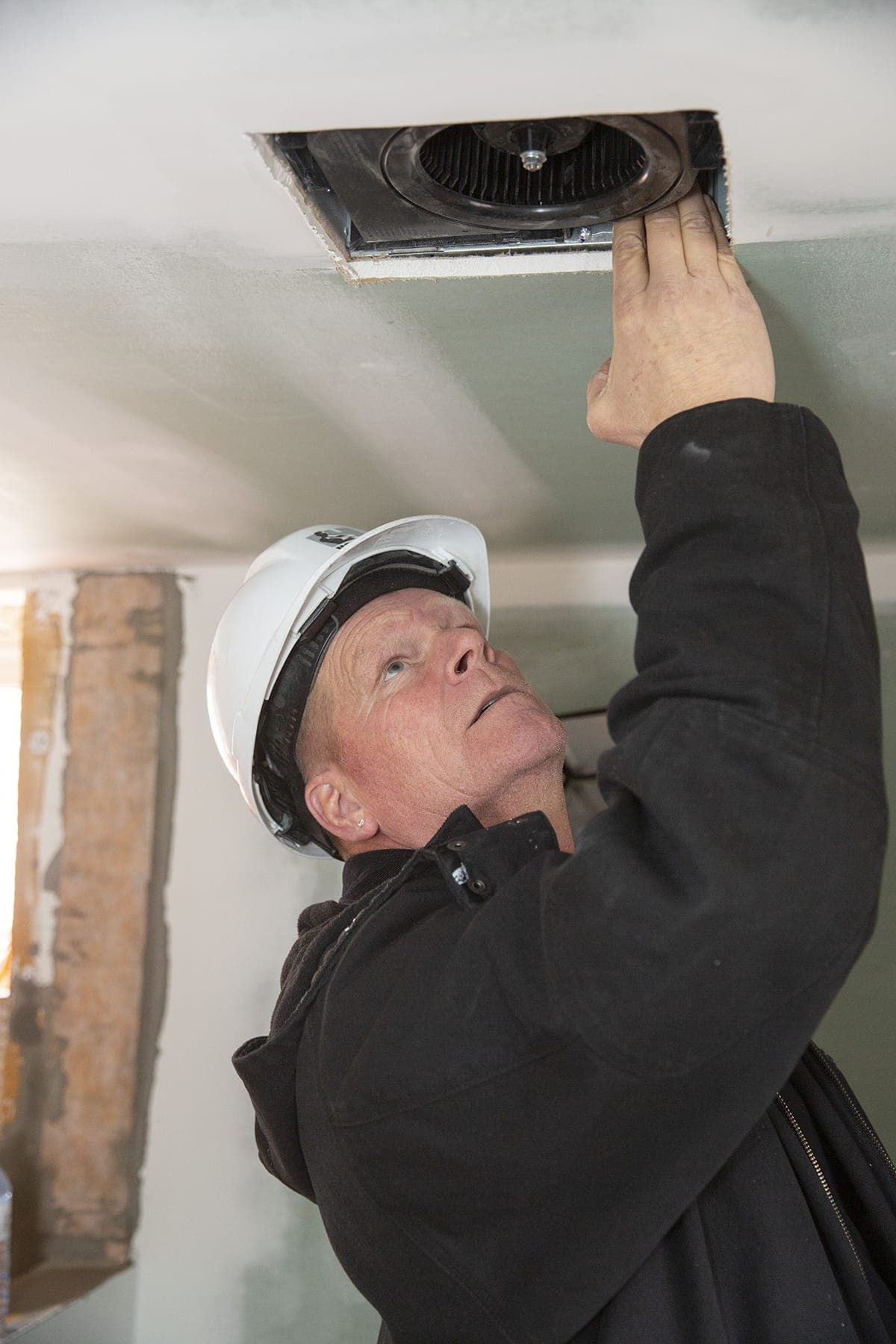
Panasonic WhisperValue Fan Installed At Job Site
Get Smart with Indoor Air Quality
I am a big believer in smart technology when it makes our lives easier, our homes more secure and HEALTHIER. We had the Swidget Smart Controls installed on a few houses we fixed. It detects unhealthy air and automatically controls Panasonic’s ventilation products, enabling it to remove the unhealthy or contaminated air. 24 hours a day, 365 days a year, so the quality of the air you’re breathing is always fresh and healthy.
Swidget Smart Controls can be added to a wide range of Panasonic ventilation solutions to ensure you are breathing the highest quality air. Swidget has a variety of sensors that monitor motion, temperature, humidity and air quality.
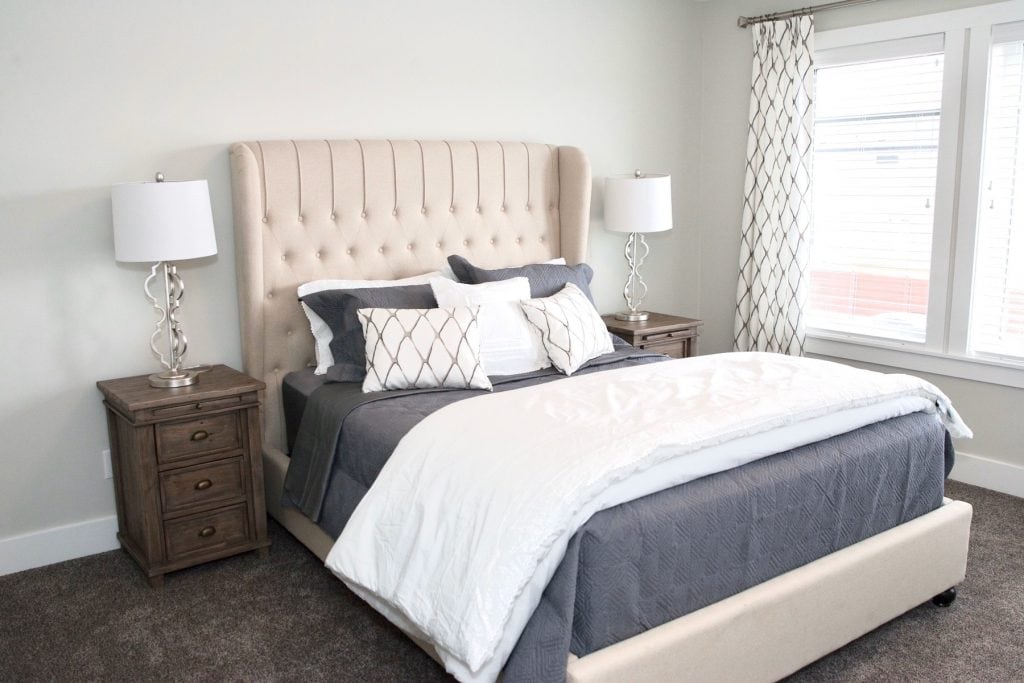
And try to keep Fido and his pet dander off the couch! Photo from Holmes Approved builder Western Living Homes
Watch the video below to see how to get clean air in your home.
How Do Houseplants Improve Indoor Air Quality?
We know that plants have serious power. After all, they produce the oxygen we need to breathe. But bringing a plant indoors can also have a positive effect on your indoor air quality.
Plants also have the ability to absorb contaminants like formaldehyde. So if you’ve got some plants lying around the house, they’ll be passively taking in those toxins.

If you have fake plants, switch them to real ones. The fake ones are magnets for dust, which can become triggers for your allergies.
What plants do you want to bring in? Here are a few that are simple to care for, no matter how green your thumb is:
- Snake plants
- Spider plants
- Aloe vera (can also be used to soothe burns)
- Weeping figs
- English ivy
It doesn’t always have to be a gigantic task to improve the air quality inside your home. Even taking small steps can have a big impact on the way you feel every day. Try it out and see if you notice a difference.
Can Poor Indoor Air Quality Affect Our Health?
It absolutely can. Unhealthy indoor air can cause headaches, nausea, irritation of the skin and eyes, a dry throat, or even just make you feel unusually tired. If you already suffer from asthma and allergies, living in a home with poor air quality can trigger those issues to an extreme.
That’s not all. When a silent killer like radon enters our homes and we aren’t able to expel it properly, it can build up to dangerous, high levels, and over time, long-term exposure to radon can cause lung cancer. For Canadians, it’s the leading cause of lung cancer for non-smoking Canadians, so it’s something we all need to take seriously.
Learn more about radon gas from Lung Cancer Canada.
Some contaminants, like VOCs may dissipate over time, but bigger health hazards like mold or radon will be there until you take active steps to remove them.
New Homes and Indoor Air Pollution
New houses and recently renovated homes will likely have a lot of VOCs. Why? VOCs are in most of our building materials – and depending on which material you choose, can off gas VOCs for years.
When you’re renovating, you can choose materials that off gas a small amount (or no) VOCs. Low VOC paint, flooring options like tile, and natural hardwood are all materials that off gas less than some of the cheap plywood furniture you might buy online.
Your indoor air quality test will have returned results to let you know what kind of pollutant you’re dealing with – which will dictate how you need to tackle the job.
READ NEXT:

